These old-fashioned Swiss cakes are adapted from an 1960's recipe from the Highland Housewives' Cook Book by Nancy Reid.
The cost of the book was 10/ - which translates to 10 shillings! Or 50p. This old Scottish cookbook is a gem full of vintage recipes collected from ordinary housewives from across the Scottish Highlands and Islands.
These wee cute Swiss cakes was a recipe sent in by a Mrs Lee from Inverness, Scotland, and are prepared with vegan friendly ingredients.
Perfect for vegan birthday parties, buffets, cake sales, afternoon teas, pack-lunches, picnics, or just as an everyday sweet treat.
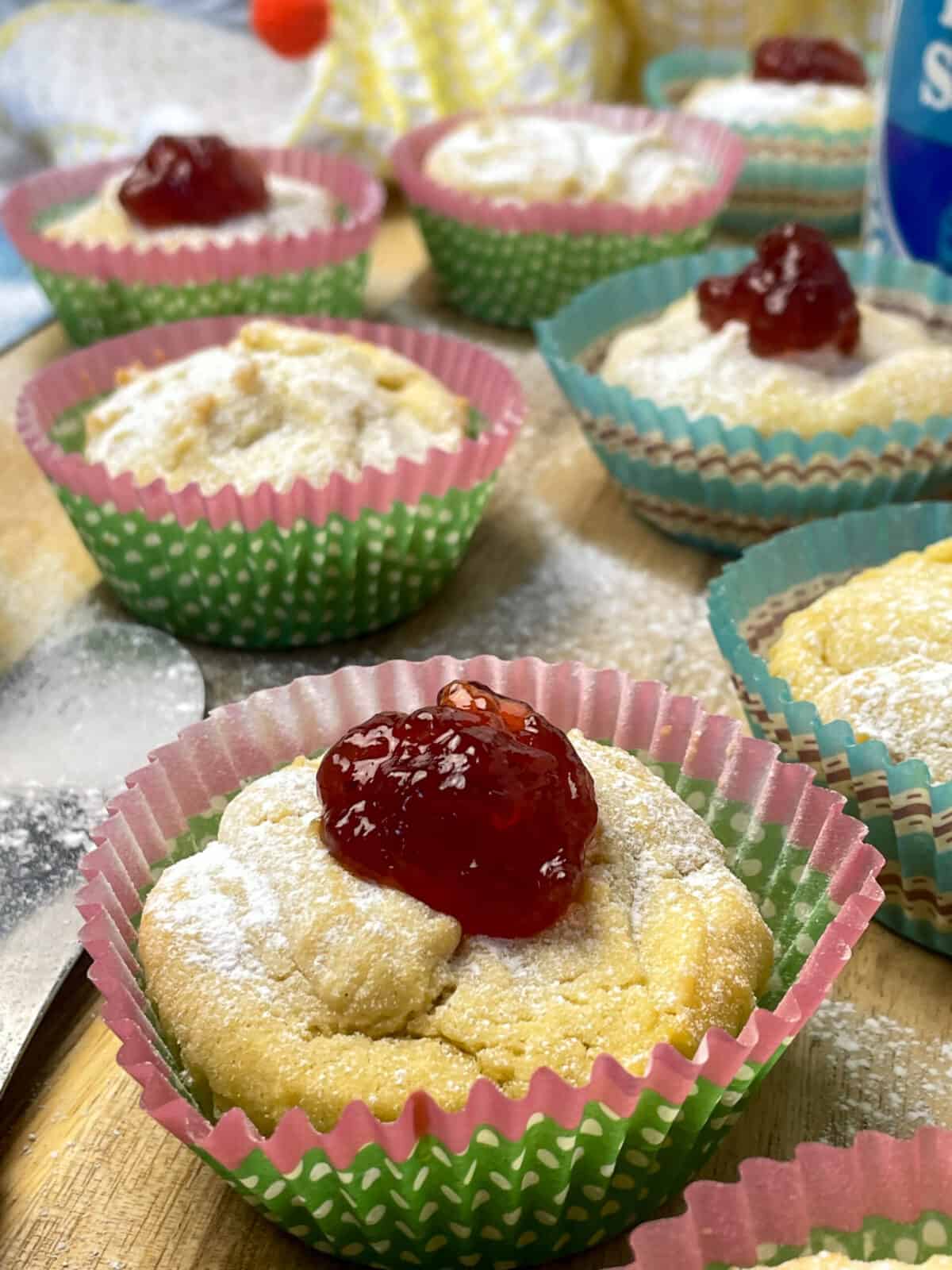
What is an old-fashioned Swiss cake?
Swiss cakes are a rare old-fashioned vintage teatime treat that was more common in Britain during the 50s and 60s.
There are other recipes on the internet for Swiss cakes that look similar to the recipe I have adapted from an old Scottish cookbook, but none are exactly the same.
Some of the recipes were Australian so perhaps Australia have their own version of Swiss cakes. Or perhaps the recipe for Swiss cakes does originate in Australia and somehow made its way over to Scotland during the 50s or earlier.
For this recipe, the Swiss cakes have a thin crisp top similar to a buttery Scottish shortbread, with a fairy-cake or cupcake like vanilla flavoured spongy inside. Although the sponge is slightly more dense somewhat like a muffin texture. The Swiss cakes are simply topped with a dusting of snowy icing sugar and a wee blob of fruit jam.
I tried to do some research as to why these little buns are called Swiss cakes and due to the lack of information available I had to make a guess. Especially as I couldn't find any reference to these cakes actually originating from Switzerland.
My best guess is that the little cakes are named after the Swiss Alp mountains, as the top of the cakes are crisp with the appearance of mountain ranges.
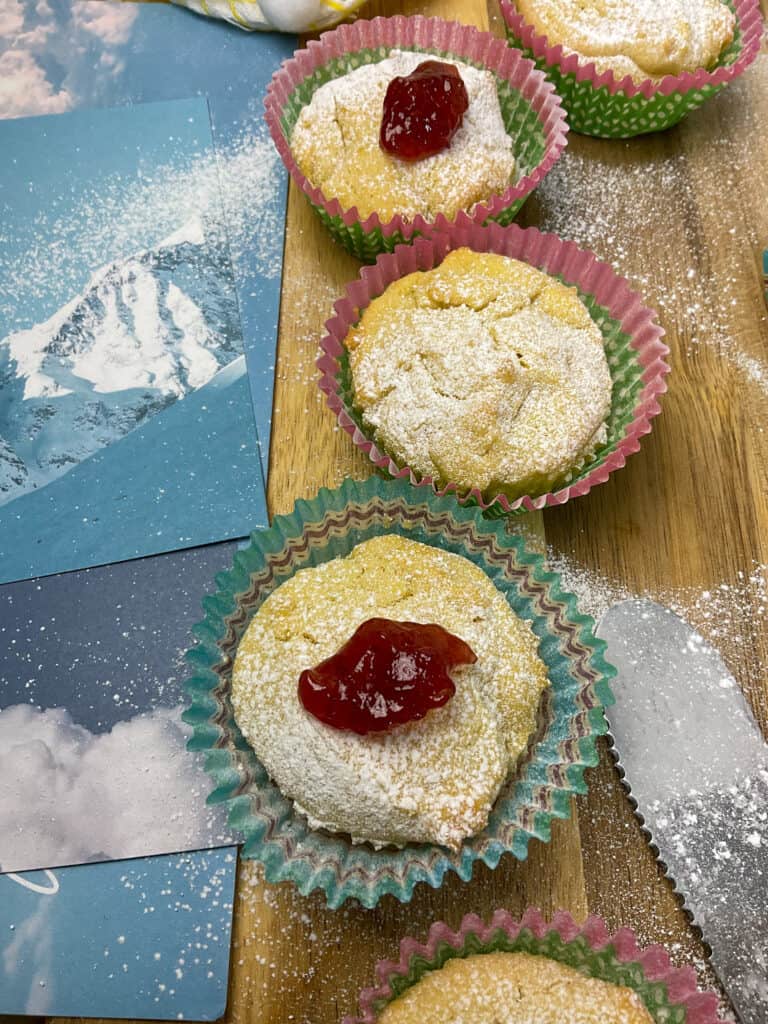
Kids especially will love making these little mountain ranges, especially good for those geography projects!
Also, the addition of powdered icing sugar resembles snow on the mountains, with the blob of red fruit jam the mountain peak, or even the sun illuminating the mountain. Alternatively, perhaps the red jam is meant to resemble the red and white colours of the Switzerland flag.
This explanation came to me as I was preparing the cakes and it does seem quite logical. Although, if you have any other thoughts or indeed know the real reason why these are called Swiss cakes, then do pop a comment below and enlighten me!
How to prepare old-fashioned Swiss cakes
These delicious little cakes are simply decorated with a dusting of icing sugar, also known as powdered or confectioners sugar. Any fruit jam or preserve can be used to cap the little mountain ranges!
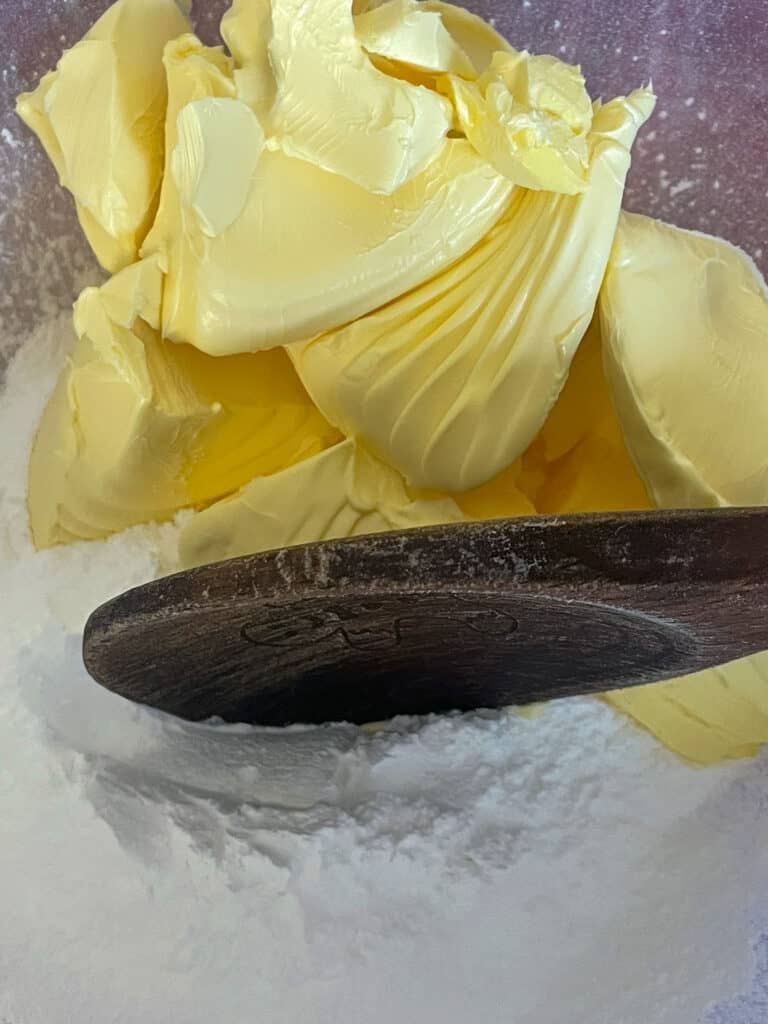
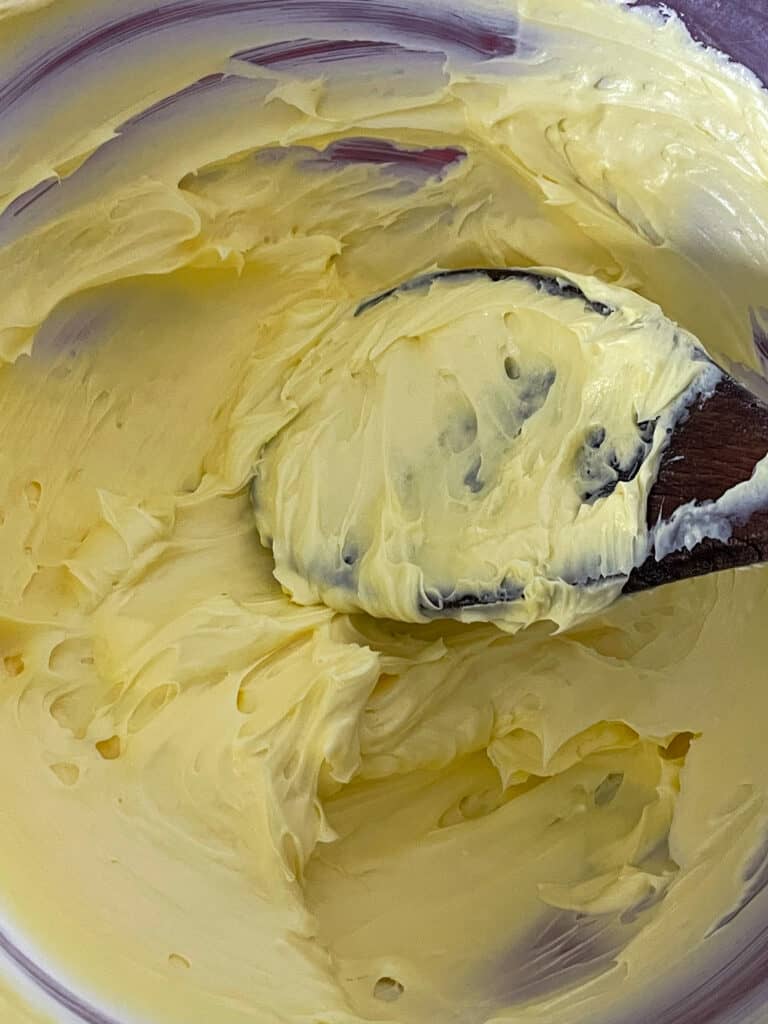
Cream or beat the margarine and icing sugar together.
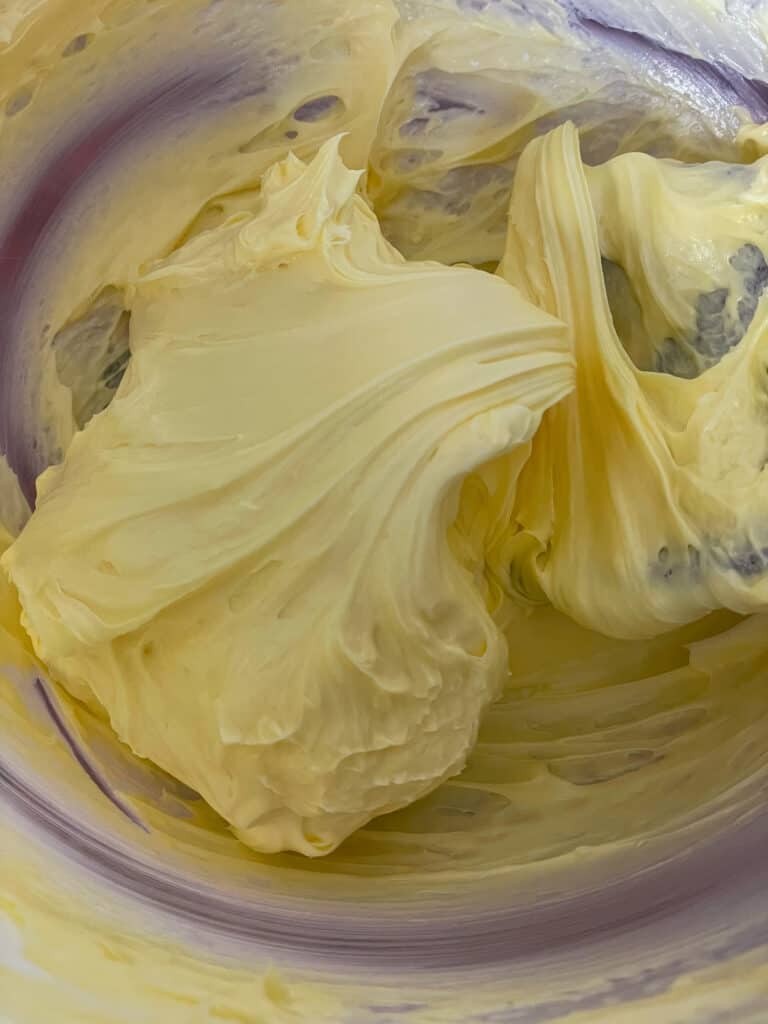
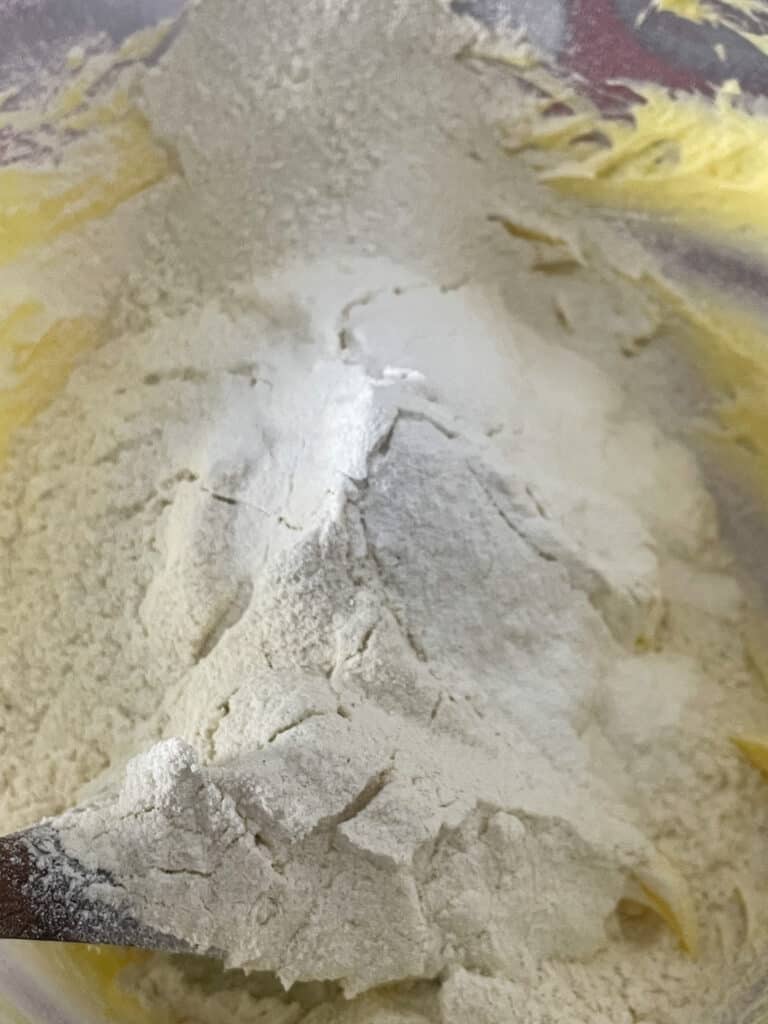
Whip the vanilla essence through the creamed margarine. Sieve in the flour and baking powder.
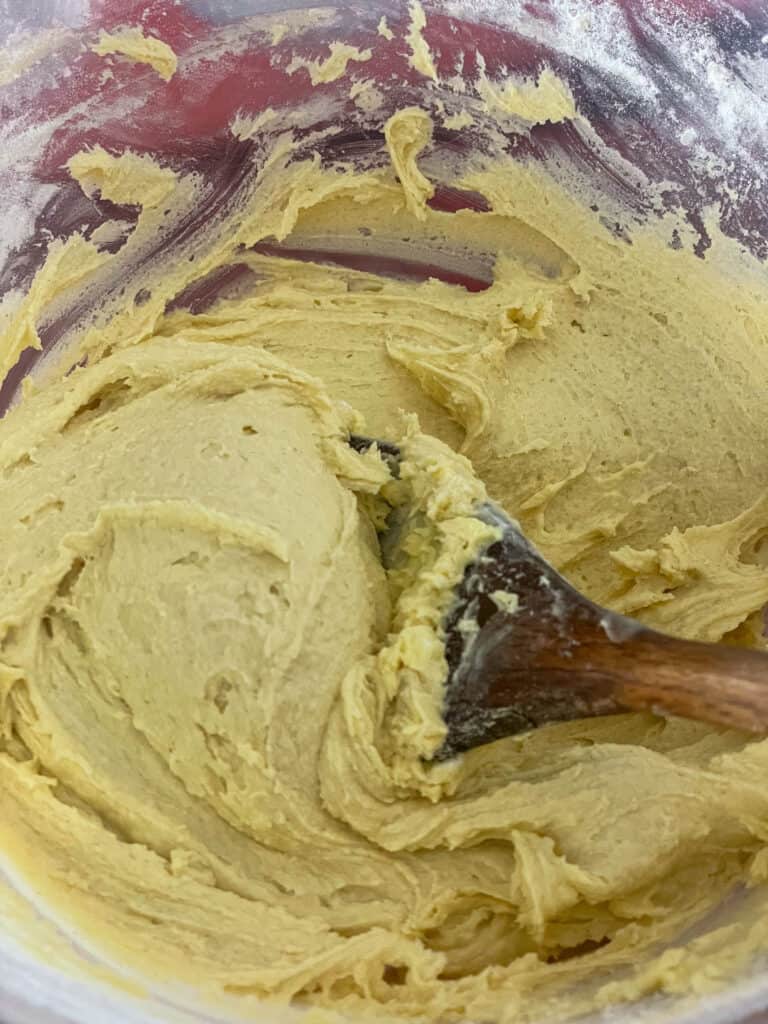
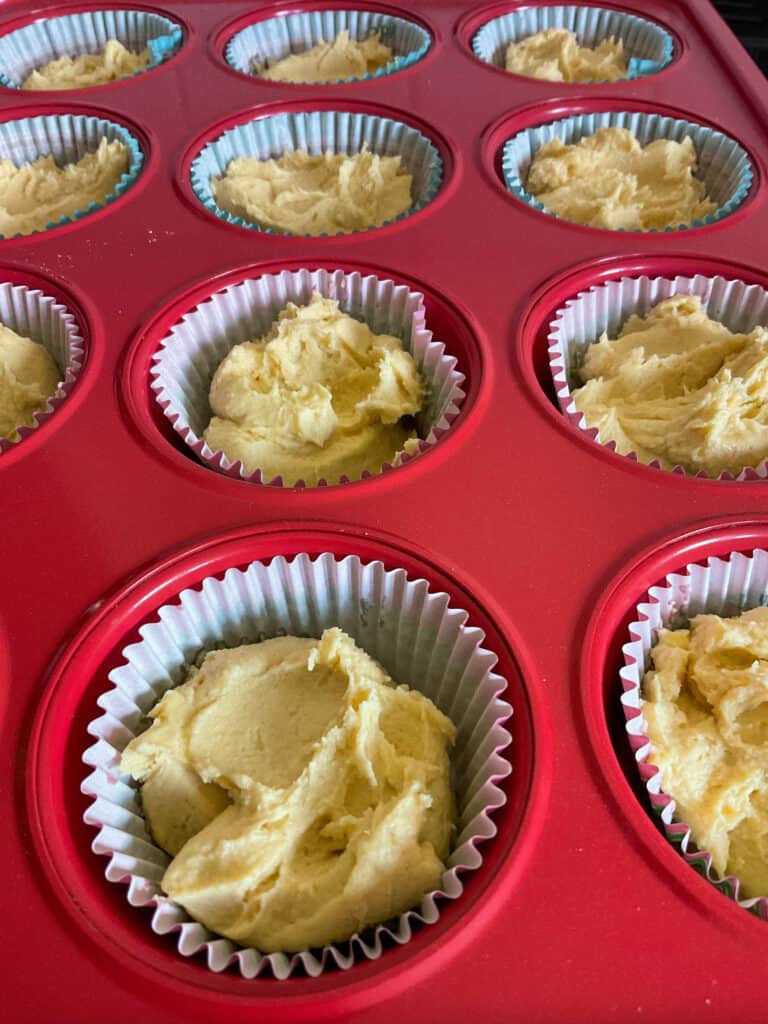
Stir until just combined.
Divide the cake batter between the 12 paper cases.
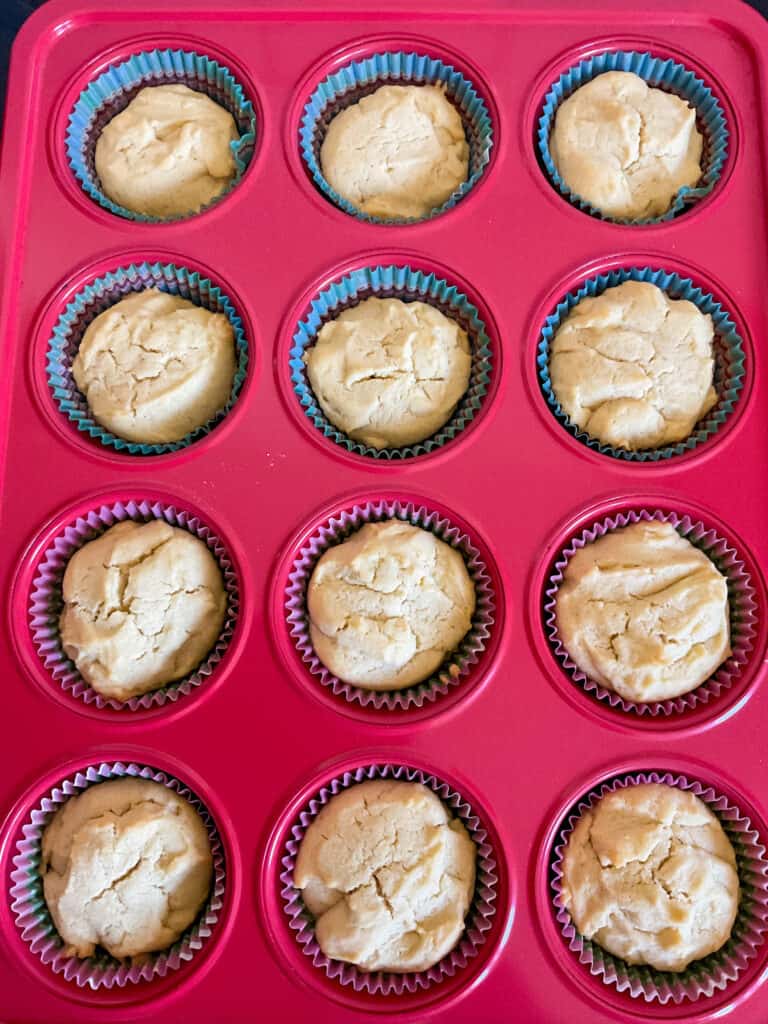
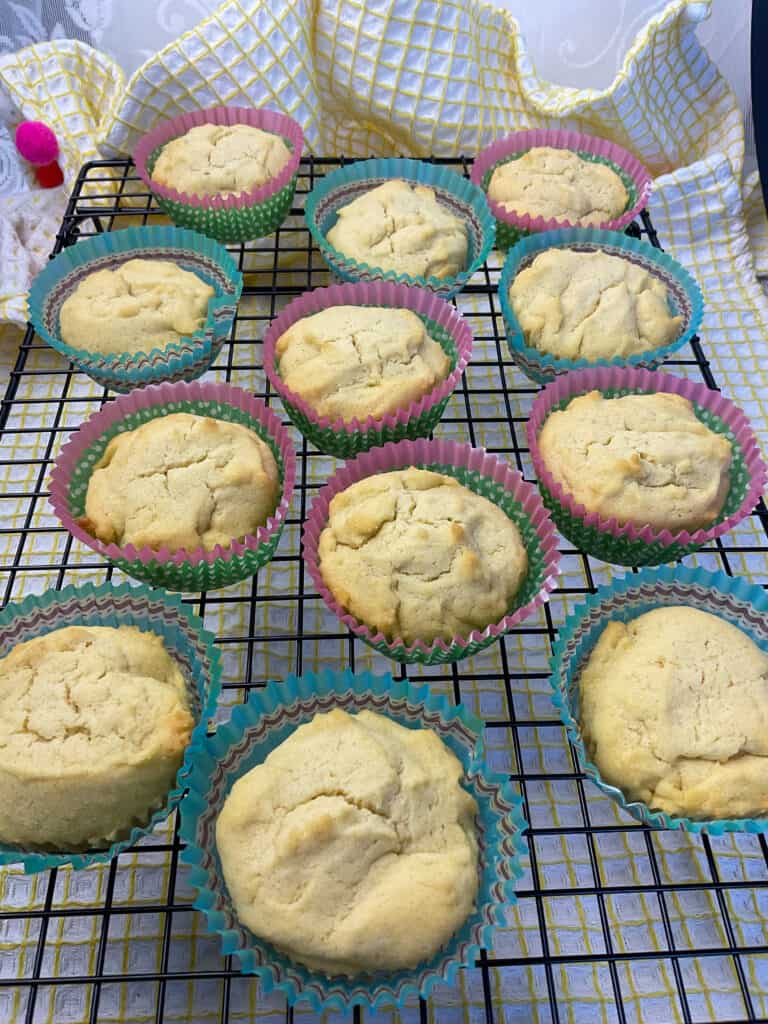
Bake for 15-20 minutes until lightly golden, firm on top, and a skewer popped in comes out clean.
Cool completely before decorating.
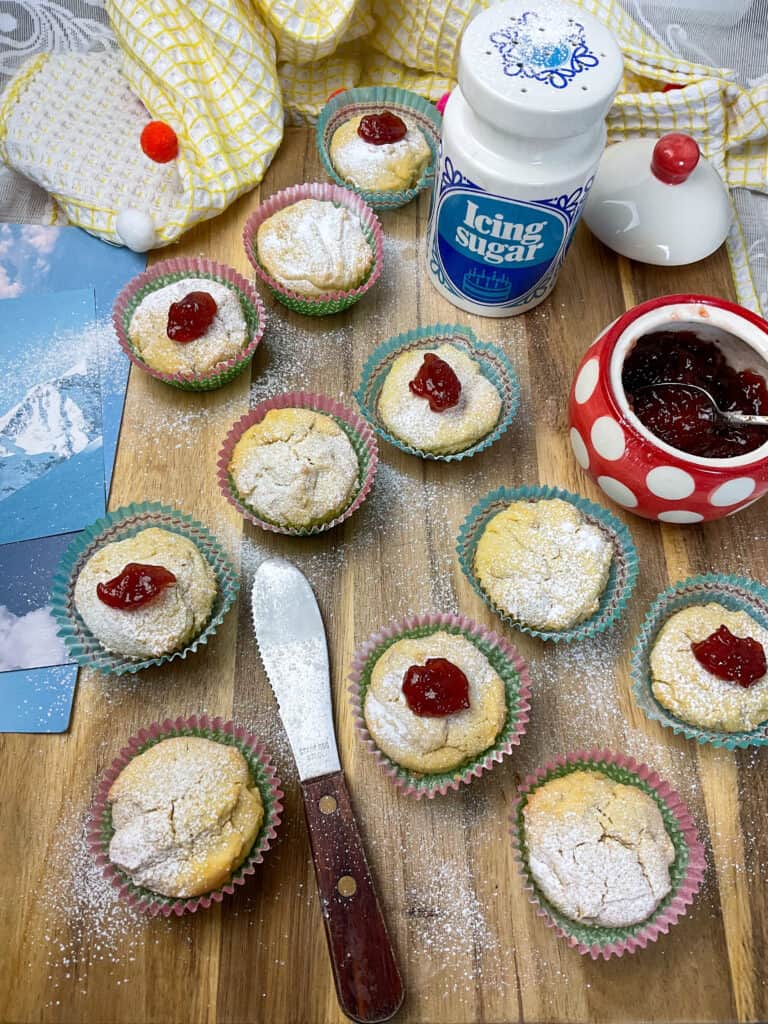
Decorate with a dusting of icing sugar and a wee dollop of fruit jam.
Recipe notes and FAQs
Storage
Swiss cakes can be stored in a cool, dry place within a cake tin or food container for 2-3 days. Additionally, wrapping the cakes in a layer of kitchen foil, and then storing in a tub or tin, will help keep the cakes fresher for longer.
Or wrap and place in the refrigerator if storing somewhere warm.
Swiss cakes can be frozen [undecorated] for 2-3 months. Defrost to room temperature before decorating.
Icing sugar is simply sugar, such as granulated or caster sugar, that has been powdered into a fine flour like consistency.
As the icing sugar is so fine and dusty, often an anti-caking agent or a product such as maize starch is added to prevent the sugar from clumping together as it stores.
However, it is best to sieve your icing sugar before using in recipes as this will ensure the best outcomes.
Other countries, especially the US, may label icing sugar as powdered or confectioners sugar.
Some brands of icing sugar may have been prepared with bone char which is not vegan.
However, this manufacturing process tends to be more common in the US compared with the UK. Most icing sugar brands within the UK are suitable for vegans, especially the Tate and Lyle variety.
So if you are located within the US organic powdered sugar may be more likely to be vegan, but do check before purchasing.
Also some brands of icing sugar may actually contain dried egg whites, so its best to check the ingredient list.
More vegan family favourite traditional teatime treats:
Old-school dinners concrete cake
📖 Recipe
Old-Fashioned Swiss Cakes
Equipment
- fairy cake/cupcake paper baking cases
- sieve
- wire rack
Ingredients
Cakes:
- 225 grams vegan margarine
- 60 grams icing sugar [powdered sugar]
- 1 teaspoon vanilla essence
- 225 grams plain flour [all-purpose flour]
- 1 teaspoon baking powder
- 1 pinch salt
Decorate:
- 6 teaspoon fruit jam [use more if preferred]
- 1 tablespoon icing sugar [powdered sugar]
Instructions
- Preheat the oven to 160 Fan / 180 C / 356 Fahrenheit / Gas mark 4.
- Pop a paper baking case into each cup within the cupcake baking tray.
- Add the margarine to a mixing bowl and sieve in the icing sugar.225 grams vegan margarine, 60 grams icing sugar
- Cream and whip the margarine into the sugar for a few minutes. This can be done by hand with a mixing spoon or if preferred use a hand whisk.
- Stir through the vanilla until it is incorporated into the mixture.1 teaspoon vanilla essence
- Next sieve the flour and baking powder into the mixture. Stir until just combined.225 grams plain flour, 1 teaspoon baking powder, 1 pinch salt
- Scoop the mixture up with a tablespoon and scrape into each of the paper cases. Level the tops a little but keep it a little bumpy as then the cakes will bake into cute little rocky mountains.
- Bake on the middle shelf for 15-20 minutes. When baked the cakes will be lightly golden with some of the peaks tinged more golden, and a skewer popped in to the centre comes out clean. Cakes will also feel firm to touch.If using a fan oven check after 15 minutes as fan ovens tend to bake faster.
- Leave the cakes in the baking tray to cool for 10-15 minutes before removing and cooling completely on a wire rack.
Decorate:
- Dust icing sugar over each cake and place a small dollop of fruit jam on each. Alternatively a halved glace/candied cherry or other small vegan sweet could replace the jam.1 tablespoon icing sugar, 6 teaspoon fruit jam
Notes
- Nutritional data is provided for guidance only and is not intended to be a strict calculation as ingredients vary.
- Swiss cakes can be stored in a cool, dry area within a cake tin or plastic container for up to 2-3 days. Also wrapping in a layer of kitchen foil will help keep the cakes fresher for longer.
- If the cakes are being stored in a warm environment then storing in the refrigerator may be best.
- Or freeze [undecorated] for up to 2-3 months.
- Any fruit jam or preserve can be used to decorate.
Nutrition
Prepared these wee cute Swiss cakes?
Do let us know how you got on. These little vegan cakes are a new favourite at our house.
Sharing a photo on social media?
Tag us in using @traditionalplantbasedcooking or #traditionalplantbasedcooking
So we can admire your great baking.
Thanks so much Jacq x
Nathan says
These were amazing. Couldn't wait till they completey cooled before eating them. Loved how your recipe had the measurements added in along the way and temperatures for fan ovens. Thank you very much 😊
Jacq says
Thanks Nathan! Happy you loved the Swiss cakes. I agree these Swiss cakes are amazing warm from the oven. I find that their crisp topping is at its best soon after baking. That's good to know that you liked the measurements added along the way in the recipe card, as that's a new feature and I wasn't sure if people would like it. I will take some time and add it in for the other recipes 🙂
Glenda King says
Still need 2 know about the flour
Jacq says
Replied below 🙂
Glenda King says
Can u use free from plain flour instead of ordinary plain flour
Jacq says
Hi Glenda, i have not tried these Swiss cakes with free from plain flour but if I was going to I would add 1/4 teaspoon of xantham gum to help the cake crumb stick together, as gluten-free bakes can be crumblier. Also I possibly would add a teaspoon of milk as gluten-free flour tends to result in a drier cake. I do have some gluten-free plain flour at home so will try a batch and let you know how I get on. Look out for an update tomorrow, thanks!